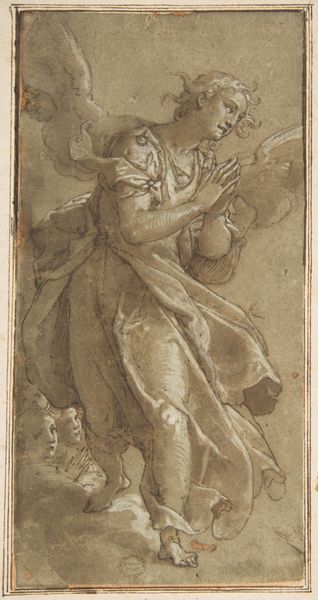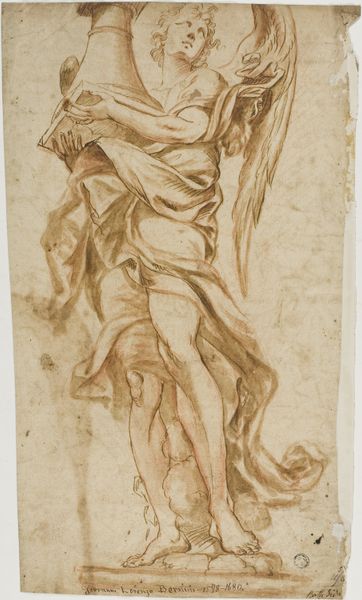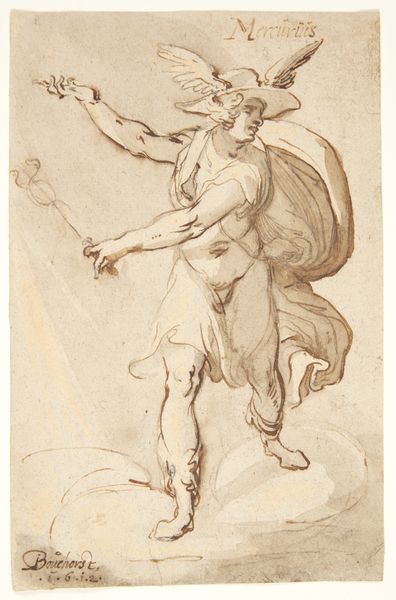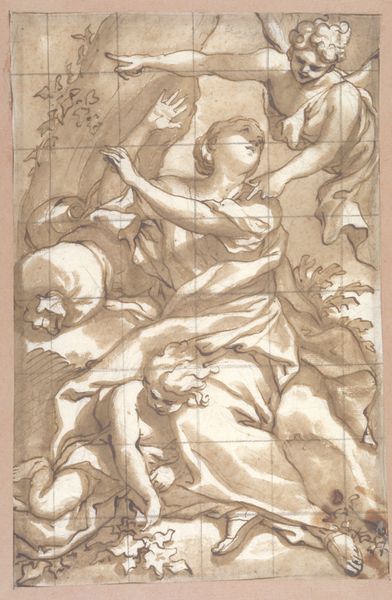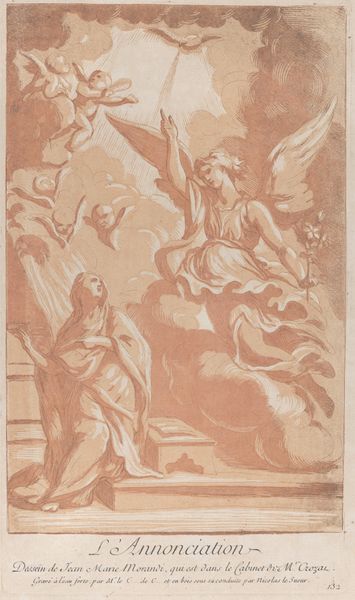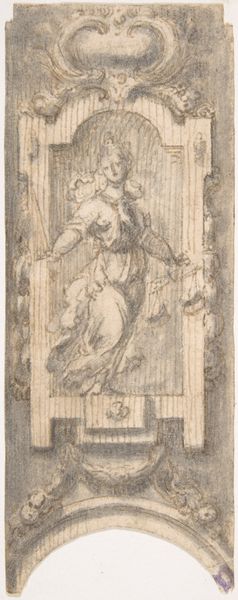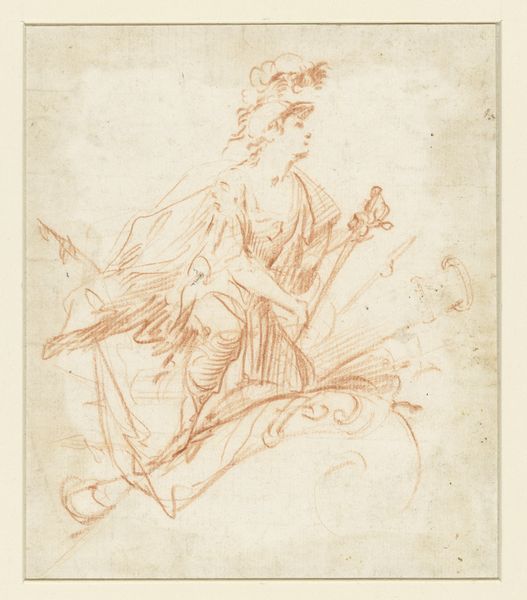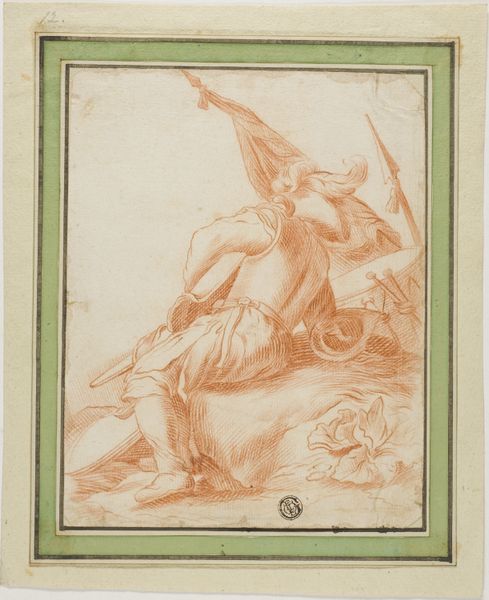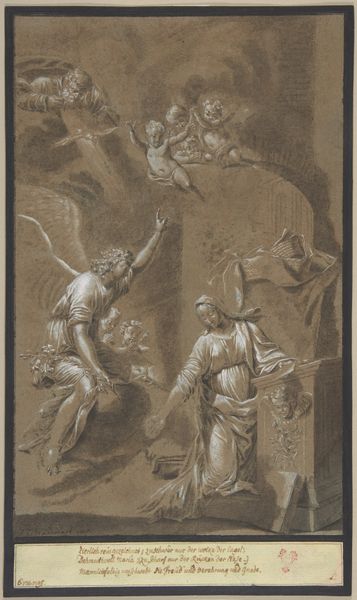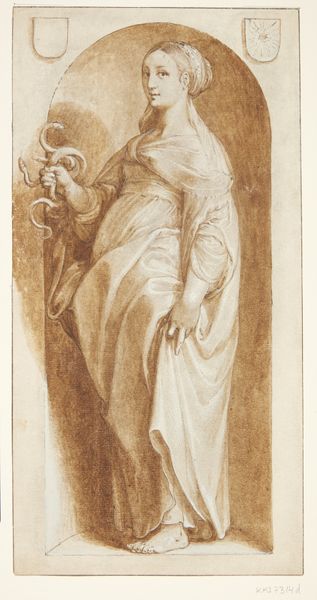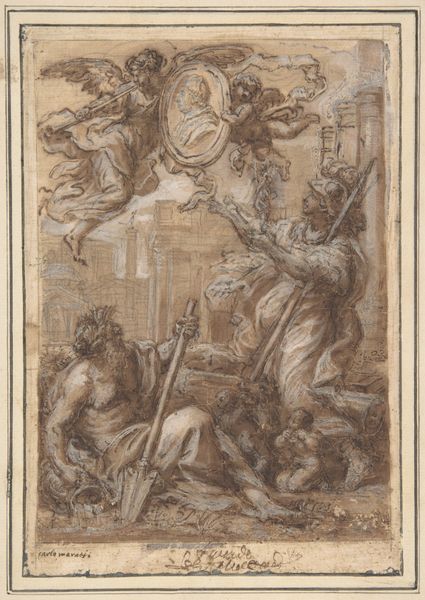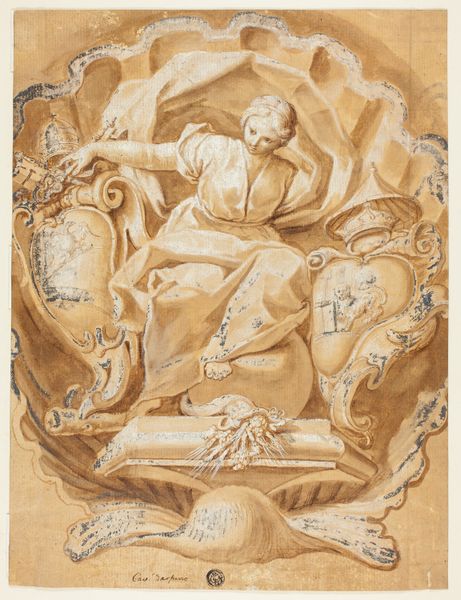
drawing, print, paper, ink
#
drawing
#
allegory
#
baroque
# print
#
figuration
#
paper
#
ink
Dimensions: 9 7/16 × 4 3/16 in. (24 × 10.7 cm)
Copyright: Public Domain
Curator: Here we have "Angel with a Banderole" by Camillo Procaccini, created sometime between 1555 and 1629. It's a drawing rendered in ink on paper. Editor: The red chalk is striking. It lends such warmth to the subject, though the hatching creates an almost frantic energy, as though this angel is about to deliver some urgent message. Curator: The "banderole," or ribbon, is a key element here. These types of visual devices often accompanied figures to deliver pronouncements or scriptural verses. The paper itself speaks volumes too. Procaccini's masterful use of readily available materials underscores the democratization of religious art during the late Renaissance. This piece shifts our focus from the divine to the everyday human effort that brings sacred imagery to life. Editor: But that's precisely the point, isn't it? This isn't just about making the divine accessible; it's about visualizing faith, about giving form to the unseen. Notice how the angel’s gaze follows the ribbon; is she focusing on delivering her divine message or on the aesthetic value the message holds? The curls of the angel’s hair create visual harmony with the swirling cloud at the bottom, signifying divinity and spirituality through their aesthetic representation, and grounding this piece in centuries of Christian symbolism. Curator: True, and it's important to consider the historical moment too. The materials and techniques Procaccini used made such imagery affordable. Printmaking especially allowed religious ideas to be distributed quickly and cheaply, shaping cultural consciousness across broader swaths of the populace. This challenges the notion of "high" art existing separately from everyday lived experience, revealing it instead to be entwined with the material and economic conditions that make its creation and consumption possible. Editor: Indeed, but it's equally compelling how Procaccini weaves together traditional Christian imagery with an individualized artistic interpretation. The banderole symbolizes communication with the divine, resonating across cultures that imbue writing or artistic text with sacred significance. It's about making the eternal palpable, visible. Curator: That’s right; and acknowledging the accessibility of not only the message but also the techniques brings the piece down to Earth. Editor: Seeing how deeply tradition is ingrained is always enriching. Curator: For me, it always boils down to production and consumption of images like this across time and place.
Comments
No comments
Be the first to comment and join the conversation on the ultimate creative platform.
